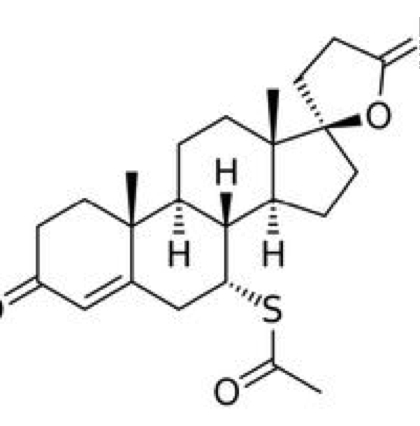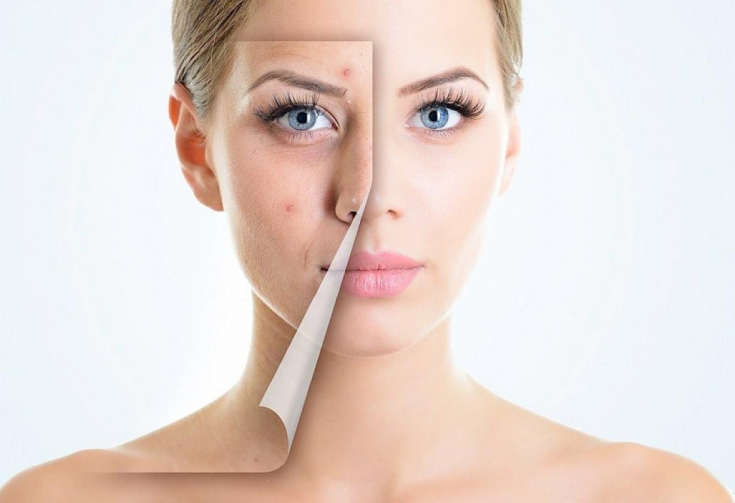Despite the notable advances in the treatment of acne in recent years, failures are still common, especially among women. A serious role in the pathogenesis of this pathology is assigned to hormonal disorders, namely high levels of androgens or increased sensitivity of the hormone receptor. The appointment of combined oral contraceptives in patients with acne is unjustified due to the lack of influence on the pathogenesis of the disease and the high likelihood of side effects from the body. Spironolactone can be an excellent alternative, read more about the results of spironolactone treatment in patients with acne at estet-portal.com
- Spironolactone and its effects on the body
- Spironolactone Efficacy in Study and Side Effects
- Conclusion and further forecast
Spironolactone and its effects on the body

In terms of its pharmacological group, it belongs to potassium-sparing diuretics, but it is also used as an androgen receptor blocker in the treatment of acne and hirsutism.
The effective dosage of spironolactone ranges from 100mg to 200mg/day. At a dosage of 200 mg/day, most patients experienced side effects, but not serious ones. Previously, there were no data on the effectiveness of acne treatment when taking low doses of spironolactone, but the latest retrospective analysis of 85 women with this pathology, who took low doses of spironolactone alone or in combination with the main treatment, showed effectiveness.
Read also: Why does acne appear on the skin
The patients for the study were selected according to two criteria:
- Previous failure of systemic therapy, including antibiotics, isotretionine, or oral contraceptives.
- Clinical manifestations of hormonal changes.
Read also: Where does acne come from
All 85 women were between the ages of 18 and 52, and the majority (58 patients) met both criteria. All women had moderate to severe inflammatory papular or nodular acne. Study participants were treated with oral spironolactone, 50 to 100 mg/day, alone or in combination with systemic antibiotics, oral contraceptives (ethinyl estradiol 35 mcg and norethindrone 1 mg), or both.
All women were tested monthly or bimonthly for treatment effectiveness. The duration of treatment ranged from 2 to 24 months.
Patient past treatment data
A total of 67 women (79%) failed to treat acne with one or more courses of systemic antibiotics, 53 of them due to inadequate response and 14 due to side effects.
Minocycline, tetracycline, and erythromycin were the antibiotics used in these patients for systemic therapy.
Previous use of oral contraceptives to treat acne was unsuccessful in 14 patients (16%), and one or more courses of isotretinoin were unsuccessful in 12 patients (14%). Sixty-eight women (80%) had signs suggestive of hormonal disorders, namely:
- adult acne,
- premenstrual flashes,
- seborrhea,
- ovarian cysts,
- hirsutism,
- androgenetic alopecia
- Lesions along the line of the mandible and neck.
Fifty-eight women (68%) had both previous failed acne treatment and hormonal influences, and 9 patients with no previous therapy also had signs suggestive of hormonal changes.
Effectiveness of spironolactone in the study and its side effects
Of the 85 study participants who started treatment, only 73 were available for efficacy evaluation. Of these 73 people, 24 women (33%) showed progress, defined as no acne or occasional isolated lesions. An additional 24 study participants (33%) showed measurable progress, defined as an improvement of more than 50%. Twenty patients (27.4%) showed partial improvement, defined as an improvement of less than 50%. Five people showed no improvement at all.
The subgroup analysis of 24 people who showed marked improvement was as follows:
- spironolactone only - 5 patients (20.8%);
- spironolactone plus oral antibiotics - 14 patients (58.3%);
- spironolactone plus oral contraceptives - 3 patients (12.5%);
Read also: Etiological factors of acne
Side effects:
Eighty women were evaluated for side effects (5 were lost to follow-up). Forty-six patients (57.5%) reported no side effects. Menstrual irregularities were reported in 14 study participants (17.5%). Symptoms of lethargy, fatigue, dizziness, headache, grouped as "symptoms of the central nervous system (CNS)", were registered in 13 people (16.3%). Symptoms reported also included breast tenderness (n = 4), diuretic effect with increased frequency of urination (n = 2), mild headache (n = 2), melasma (n = 2; these patients also received oral contraceptives) , nausea (n = 1), decreased libido (n = 1) and xerosis (n = 1). Serum potassium levels were determined in 73 patients,

Blood pressure was documented before and after treatment in 19 people and showed a maximum individual reduction in systolic pressure of 15 mmHg. Art. and Conclusion and further forecast
Every doctor knows that the tactics of treating a particular pathology must be justified in terms of adverse reactions and effects on the body. Spironolactone therapy has shown good results in the treatment of acne, both in the use of monotherapy and in combination with other drugs. The absence of serious side effects on the part of the body, together with a positive result, is a rather weighty argument in favor of choosing the tactics of treating patients with acne, especially in the post-pubertal period in women with signs of hyperandrogenism.
Watch us on YouTube:







Add a comment